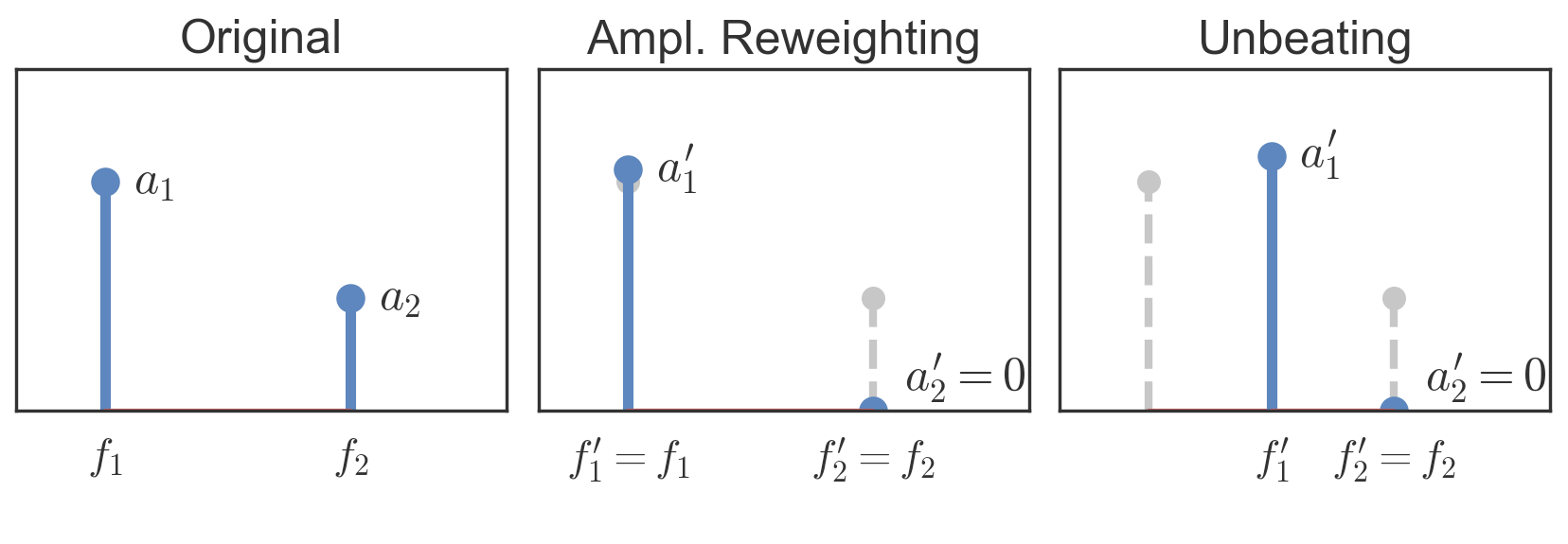Modifying Partials for Minimum-Roughness Sound Synthesis
This is the accompanying website to the article [1].
- Simon Schwär, Meinard Müller, and Sebastian J. Schlecht
Modifying Partials for Minimum-Roughness Sound Synthesis
In Proceedings of the 3rd International Conference on Timbre, 2023. Demo@inproceedings{SchwaerMS_AdaptiveTimbre_TIMBRE, author = {Simon Schw{\"a}r and Meinard M{\"u}ller and Sebastian J. Schlecht}, title = {Modifying Partials for Minimum-Roughness Sound Synthesis}, booktitle = {Proceedings of the 3rd International Conference on Timbre}, address = {Thessaloniki, Greece}, year = {2023}, url-demo = {https://www.audiolabs-erlangen.de/resources/2023-TIMBRE-AdaptiveTimbre}, }
Abstract
In this work, we introduce and compare two methods to adaptively modify the partials of simultaneously sounding synthesized tones to minimize roughness. By changing their amplitude and/or frequency over time (e.g., for each chord separately), it is possible to dynamically control the timbre of a polyphonic sound in real time. This introduces an additional parameter for sound synthesis that may allow for changing the roughness of a sound without modifying other perceptual attributes of the individual tones, like their fundamental frequency (F0) or loudness. We draw inspiration from choir singers, who may not only dynamically adapt their pitch, but also control their vocal formants (i.e., the prevalence of certain partials) as an additional means to facilitate intonation and voice blending between musicians.

Audio Examples
Synthesized chords with random detuning (+/- 20 cents) and different timbres
D major (D5, A4, F#4, D4), Sawtooth
D major (D5, A4, F#4, D4), Clarinet-Like
A minor (A4, E4, C4, A3), Sawtooth
A minor (A4, E4, C4, A3), Clarinet-Like
E7 (G#4, D4, B3, E3), Sawtooth
E7 (G#4, D4, B3, E3), Clarinet-Like
Acknowledgments
The International Audio Laboratories Erlangen are a joint institution of the Friedrich-Alexander-Universität Erlangen-Nürnberg (FAU) and Fraunhofer Institute for Integrated Circuits IIS. This project is supported by the German Research Foundation (DFG MU 2686/13-2).

